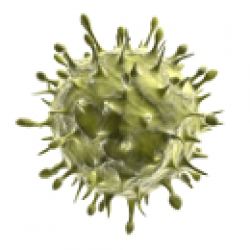Rotavirus infection is a very contagious, resulting in gastroenteritis, fever, vomiting, and diarrhea — sometimes severe enough to cause life-threatening dehydration. Thankfully, there are a couple of effective vaccines that have been available since 2006 in the United States, and now are available worldwide. Symptoms of a rotavirus infection typically appear within 2 days of acquiring the virus ( 'catching' the virus is usually via poor hygiene). Young children and infants with rotavirus infections may also develop a condition known as viremia — this occurs when the virus leaves the gastrointestinal tract and is carried by the blood to other parts of the body. And one of the places it can show up is the central nervous system, possibly resulting in seizures.
Dr. Kimberly D. Pringle from the CDC and colleagues investigated whether the significant decrease in the number of hospitalizations for gastroenteritis which followed the introduction of the rotavirus vaccines was accompanied by a decrease in seizure-associated hospitalizations. The type of seizure they focused on was those that were not associated with fevers (a high fever from any cause could result in seizures): these are termed tonic-clonic seizures, also known as grand mal seizures.
The researchers analyzed data from the State Inpatient Databases of the Healthcare Cost and Utilization Project, which contains full-year hospitalization data from 48 states and the District of Columbia. For their analysis, they considered hospitalizations for non-febrile (non-fever related) seizures in children less than 5 years old and compared the number of such hospitalizations during the periods from 2000 to 2006, and from 2008-2013 i.e., before the introduction of anti-rotavirus vaccines, and for several years after that introduction. Data from a total of nearly 1 million seizure hospitalizations were evaluated, and they were divided by age in months:
- 1-2
- 3-5
- 6-11
- 12-17
- 18-23
- 24-35
- 36-47
- 48-59.
Before the vaccine introduction, the average annual hospitalization rate for seizures in such children was 388 cases per 100,000, with the highest rate among the youngest group (1631 cases per 100,000) and the lowest (176 per 100,000 in 48-59-month-olds).
After vaccine introduction, seizures among all the children decreased by 1-8 percent, depending on the age group. The group with the greatest reduction in 2013 was in those 0-2 months old, and 12-23 months old — a 14-16 percent reduction. Overall, comparison of the rates during the period of peak rotavirus infection (between January and June) before and after vaccine introduction revealed a highly significant reduction in seizure hospitalizations in 12-17-month-old children — from 553 to 493 per 100,000.
Although these data are correlational, they support previous work in this area, the authors stated, both in the United States and in similar work in Spain. Thus, they conclude:
“These findings suggest a possible additional vaccine benefit of decreasing hospitalizations due to rotavirus-related seizures.”
We often think of unexpected consequences in a negative light, but here is an obvious exception. These data should certainly support strong efforts to have young children vaccinated against rotavirus infections.
Source: Kimberly D Pringle, et al. "Trends in Rate of Seizure-Associated Hospitalizations Among Children < 5 Years Old Before and After Rotavirus Vaccine Introduction in the United Sates, 2000–2013." Journal of Infectious Diseases, jix589. Published: 09 January 2018. DOI: 10.1093/infdis/jix589

